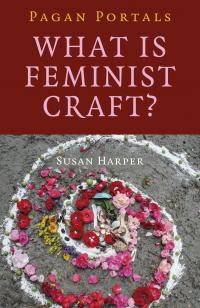
The Poisoning of Gaia - Scott Irvine
Humans first used the gifts of Mother Earth around 450,000 years ago when they crafted basic stone tools to cut, scrape, stab and hammer their dinner at the beginning of the Palaeolithic period. Homo erectus had been around for a million years roaming the planet before discovering the skill of tool making. Was it a coincident that it coincided with the arrival of the Anunnaki? I don’t think so. The Neanderthal improved on the tools at the beginning of the Middle Palaeolithic period 250,000 years later making them sharper and more durable. Stone tools were refined further with the arrival of Homo sapiens 80,000 years ago at the beginning of the Upper Palaeolithic period. Homo sapiens learnt to use their tools with wooden handles for leverage to create axes, hammers and spears.
Both Homo erectus and Neanderthal had disappeared by the time of the Mesolithic period around 12,000 BCE in Europe creating micro stone tools used for sewing and drilling work. This period coincided with the retreat of Earth’s last ice age opening up large tracts of fertile forests in its wake as the planet warmed up. Simple shelters and small settlements were constructed using what could be found on the surface or cliff faces. As an active member of the Association for Portland Archaeology (APA) I have been lucky to be a guide to the Mesolithic site of Culverwell near to Portland Bill for the past few years. What I found fascinating about the site was that it had a main working area made up of flat stones laid over thousands of cockle shells that acted as a drain when it rain stopping the area from flooding. There were three fire pits, one of which was found to be used as an oven. The early Portlanders placed flat stones at the bottom with what was to be cooked on top and another set of flat stones placed on top with a fire lit on that.
The site was constructed at the lower end of a southeast facing slope that protected it from the severe south westerlies moving up the channel. A wall was constructed as a windbreak protecting the inhabitants from the cold easterly winds. Gullies each side of the camp were used as middens that swept away the waste when it rained down the slope into the sea. Evidence shows that around twenty people lived here permanently for about twenty five to thirty years. They used stone and material found locally on the surface and honoured the earth spirit, according to Susann Palmer, the director of APA and owner of the site, with a stone lined pit filled with cockleshells that contained a round flat pebble and an oyster shell with a hole drilled into it buried beneath the floor.
We have explored the Neolithic period in an earlier chapter of how humanity treated Mother Earth with reverence. The whole of the Stone Age was about working under the guidance of the Mother Goddess when nature thrived unabated until metal was discovered at the onset of the Bronze Age in 1,500 BCE and the Iron Age around the time of the birth of Christ. With metallurgy came furnaces that burnt a significant amount of wood to smelt metal and mines to excavate ore from the ground. Large swathes of forests were cut down and Mother Earth carved into without any thought for her wellbeing. Superior metal tools and weapons became a powerful industry from the manufacturing through to the transportation and trading throughout the known world. Landowners and merchants became rich and kings became powerful with an incentive to conquer new lands for their assets and people for slaves. There was to be no turning back, Mother Earth had been abandoned to the forces of consumerism. From the tribal conflicts of a century before we now saw wars between nations with those with the best and strongest weapons becoming the victors.
The Babylonians lost out to Persia who lost out to Greece who in turn lost out to Rome who were in constant conflict with the northern European Celts amongst others. All the time advancement in metallurgy created more lost forests and more mining into the body of Gaia without any thought to the spiritual aspect. There is profit to be made in war! With more weapons and armour came more profit and power to the arms manufacturers and mine owners who served the highest bidder.
On the spiritual side, the Gods were all powerful and the goddesses were jealous wives or virgin mothers. In Northern Europe, the battle was between the Norse deities of the Vikings and Saxons and the Roman Gods and Goddesses before the arrival of the monotheistic son of god of the Christians around 600 AD. Jesus did not advocate war or the subjugation of the masses, he was a man of peace but his church that followed his death instigated holy wars against all those that did not bow to their control and taking away the spirituality of the Earth and transferred it to Heaven. Wealth and power was their friend as long as that wealth and power belonged to the Christians and nothing bought wealth and power as good as land ownership/control and the exploitation of Gaia’s natural assets.
The Saxons and Vikings, once united under the cross of Christianity claimed the kingdom of England and began dividing the landscape into districts and parishes controlled by bishops. The many drystone walls and ancient hedgerows we see in the countryside today were constructed by the Saxons as a way of taxing and keeping an eye on the population.
The Normans, who were basically Vikings that had conquered Normandy in France a century earlier, Norman means Norseman, a man from the North took to the Saxon idea of keeping records of its citizens one step further by compiling the Domesday Book one year after conquering England. The Domesday Book recorded parish acreage, property ownership, farmland and cattle sizes, population and natural sources. William I saw my hometown Portland, already made into a Royal Manor by the Saxon King Ine in 600AD, as a good source of building stone that he used across his kingdom when his favoured supply from Caen was not readily available for his castles and churches.
Up until the late 14th century, stone was removed from the cliff edge, originally by hard labour, when gunpowder was used making the task quicker and more profitable. The coastline of Portland and the cliffs of the Purbecks to the east began to shrink rapidly with no consideration for the spirit of the Earth whatsoever.
The world changed dramatically at the turn of the 18th Century and the woes of Mother Earth became exponentially worse with the invention of steam power. When Thomas Savery invented a machine that could effectively draw water from flooded mines in 1698, the power of steam revolutionised the nature of work that lead to the industrial revolution in the 1760’s with steam-operated weaves giving more profit to the land and business owners than they could ever dream of. The steam powered engine invented by James Watt in 1786 led to steam operated drills, hammers, saws, cranes and traction engines allowing the quarrying of stone to move inland and with the mining of coalin England’s green and pleasant lands spread like a cancer on the skin of the Earth Goddess eating into her very being.
Just as Gaia thought it could get no worse, in the mid-19th Century, Colonel Edwin Drake constructed the first successful oil well in Pennsylvania, producing crude oil that would open up thousands of new opportunities to create more wealth and power at the expense of Mother Earth.

Ishtar and Ereshkigal by Scott Irvine
Categories:
0 comments on this article






